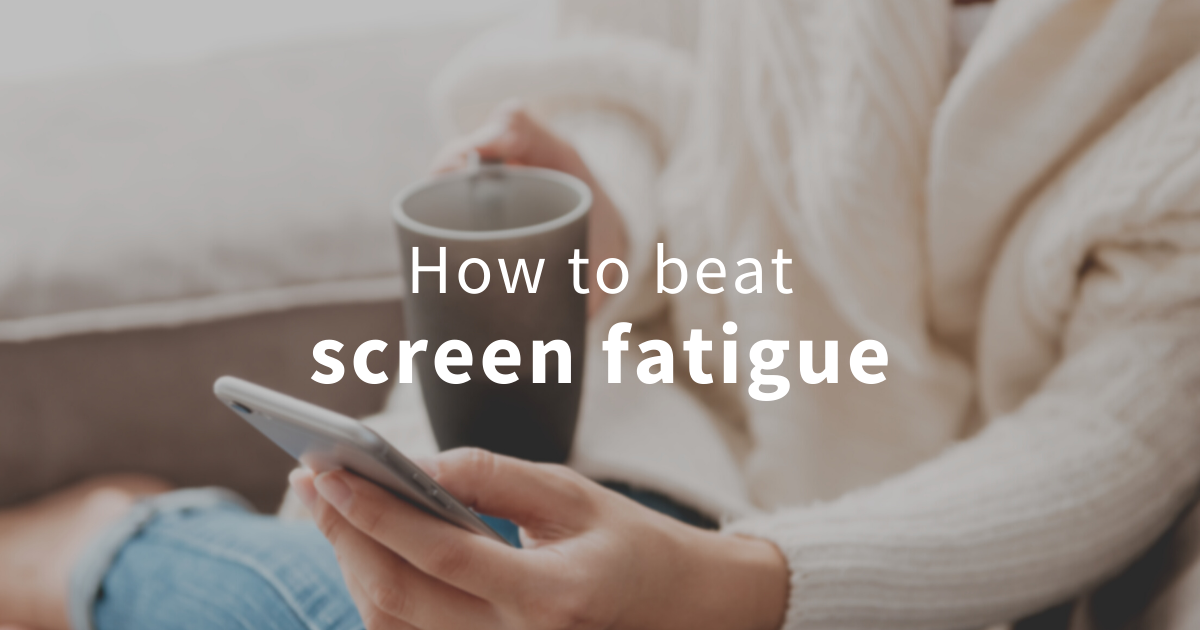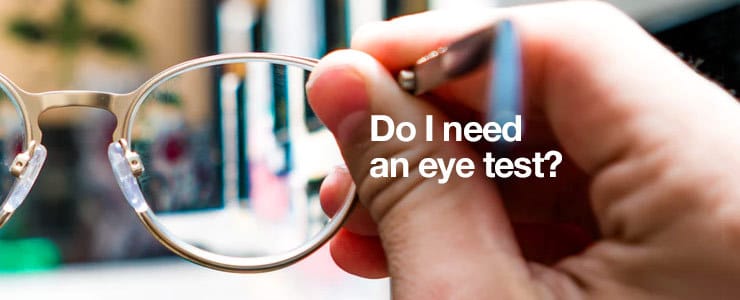Screen fatigue when working from home
If you’ve been working from home since last year, you might have noticed that towards the end of each day, your eyes are feeling more tired than usual.
It’s understandable. Many of us are still in lockdown mode, which means that our jobs, friendships, entertainment, and news are all delivered to us via screens. Even when you’re not staring at traditional screens (TVs, laptops, phones), even smart watches and fitbits are competing for your attention.
What are the symptoms of screen fatigue?
If you work and use a screen for long periods of time on a daily basis, these are the symptoms you should be looking out for:
- Sore or irritated eyes
- Trouble focusing
- Dry or watery eyes
- Blurry vision
- Increased sensitivity to light
How to prevent screen fatigue with NHS guidance
These signs can make you less productive. If you work for long periods of time, you risk exacerbating the problem. Sleep replenishes your eyes, so make sure you’re getting enough z’s and switching any screens off in plenty of time.
When you’re at home and need a break, it’s easy to turn on the TV or scroll through your phone to check social media. Unfortunately, this will just make your eye fatigue worse, so follow the 20-20-20 rule to let your tear ducts do their work and give your eyes the rest they need.
What is the 20-20-20 rule?
The 20-20-20 rule can prevent your eyes from drying out as it essentially just means taking time to look away from your screen. Take a 20-minute timeout from your computer and focus at anything 20 feet away for at least 20 seconds every 20 minutes, this could just be looking out the window or even at the floor! As long as it’s away from your screen your eyes will be getting precious time to refocus and rest.
While it may be difficult to find a place at home where you can work comfortably and without interruptions, be fair to yourself and remember that your surroundings should not strain your eyes. Here are a few other things you can do to reduce the chances of suffering from screen fatigue:
- Working in a well-lit space, preferably with natural daylight and a window, is really essential. Staring at a bright screen in a dark, dimly lit environment might cause additional strain on your eyes.
- Make sure you’re not sitting too far from or too near to your computer screen. The ideal distance between your eyes and your monitor is between 20 and 40 inches.
- Screen-reflection should be avoided. Adjust your monitor to avoid reflections from artificial lighting and sunlight so that your screen has as little glare as possible.
- See your optometrist who might suggest wearing glasses whilst working in front of a screen.
Affordable blue light glasses from Arlo Wolf
Upgrading your glasses to include blue light lenses can decrease your symptoms of screen fatigue significantly. These lenses are specifically designed to reduce the amount of blue light that enters your eyes from a device like your mobile phone or laptop. They can help with eye strain and tiredness, headaches and can also help with getting to sleep at night.
You can choose from any of our women’s prescription glasses and men’s prescription glasses range if you’re looking for a stylish pair of blue light glasses. Protect your eyes and look good doing it! Can’t decide? Make use of our try before you buy service where you can pick up to four frames and try them on at home before picking your favourite. Find your ideal work from home prescription glasses with Arlo Wolf today!

 Do I need an eye test?
Do I need an eye test? Elle UK Magazine
Elle UK Magazine 10 of the best summer reads in 2020
10 of the best summer reads in 2020 10 of the best glasses-friendly Halloween costumes
10 of the best glasses-friendly Halloween costumes